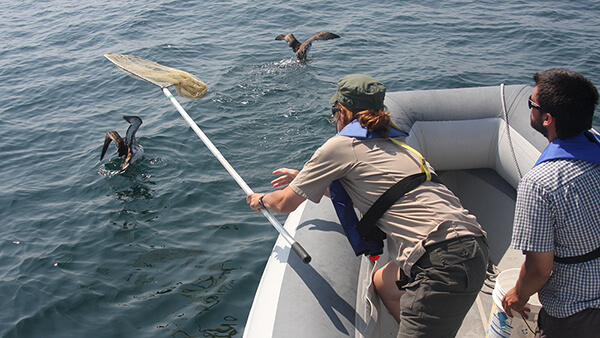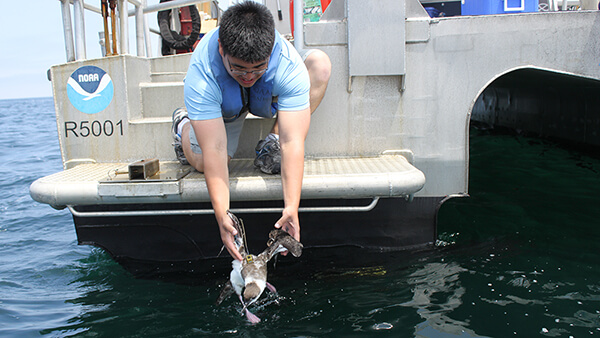Seabirds


Seabirds provide early indications of the banks' bounty or ecosystem health. They are also a more highly visible study subject than whales or fish, as they are primarily found above the water. Our Citizen Science page also has details on another sanctuary seabird program.
Tracking Seabirds to Study Ecosystem Health
Since 2013, a sanctuary research team has been tagging great shearwaters with satellite tags to follow their movements in and around the sanctuary and out into the wider Gulf of Maine. Before the birds are released with their tags, measurements and samples are taken to determine the health of the seabirds. The birds are fitted with small, 15 gram tags with solar batteries that allow for fine-scale tracking, which provides insights into foraging ecology and prey distribution. Improvements in battery life allow tags to last well into the winter migration. Some great shearwaters have been tracked to their wintering grounds along the Patagonia Shelf and the Tristan da Cunha Islands in the South Atlantic. The tagging effort was suspended in 2020 due to Covid-19 concerns, but will resume in 2021. The sanctuary's education and science teams are working together to offer a seabird tracking package for school use, which includes Gulf of Maine and Atlantic Ocean tracking maps, activity sheets, and daily location reports (sent in weekly or biweekly sets) for each of the tagged birds.
More information on the education project
Learn more about seabird tracking
Christmas Bird Count
The sanctuary has been participating in annual Christmas Bird Counts (CBC), a program administered under National Audubon. You can review these datasets at Audubon's CBC website. In 2009, the sanctuary and Mass Audubon redefined the count area for Stellwagen. Instead of a traditional count circle, the bird team, in conjunction with the sanctuary's research coordinator, laid out a set of survey tracks that covered the entirety of Stellwagen Bank. The track lines were modeled after a cetacean and seabird survey undertaken in the sanctuary in the 1990s.

